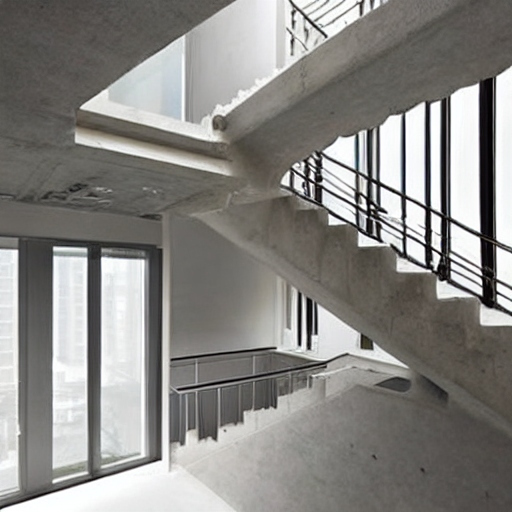Designing and calculating the capacity of a stairway involves considering various factors such as the dimensions of the staircase, material strength, load-bearing capacity, and building codes. Below is a step-by-step guide to help you calculate and implement the capacity of a stairway:
Step 1: Determine Design Criteria
Building Codes: Check local building codes and regulations to ensure compliance. Codes often provide guidelines for minimum and maximum dimensions, handrail height, tread depth, and riser height.
Occupancy Load: Determine the expected occupancy load for the building, as this will influence the design and capacity of the stairway.
Step 2: Choose Stair Type and Materials
Stair Type: Select the appropriate stair type based on the building's design and requirements (e.g., straight, L-shaped, U-shaped, spiral).
Materials: Choose materials for the stairs, considering factors such as strength, durability, and aesthetic appeal. Common materials include wood, steel, concrete, or a combination.
Step 3: Calculate Dimensions
Riser Height and Tread Depth: Use the formula Riser Height + Tread Depth = 17.5 to 18 inches (ideal total for comfortable stairs). Adjust dimensions to comply with local codes.
Number of Risers and Treads: Calculate the number of risers and treads based on the total rise and run required for your design.
Step 4: Structural Analysis
Structural Analysis: Perform a structural analysis of the chosen materials to ensure they can support the anticipated load. Consider factors such as material strength, connections, and support points.
Load Distribution: Calculate the load distribution on each step, factoring in the anticipated live load (occupancy) and dead load (weight of the structure itself).
Step 5: Handrail Design
Handrail Height: Ensure handrail height complies with local building codes. The typical range is 34 to 38 inches.
Handrail Strength: Design the handrail to withstand a specific force per linear foot. This varies based on local codes but is typically around 200 pounds.
Step 6: Implement Safety Features
Non-Slip Surfaces: Ensure that stair treads have non-slip surfaces to prevent accidents.
Visibility: Design the stairway for good visibility, with adequate lighting and contrasting colors for the nosing of each step.
Step 7: Professional Review
Consultation: Have your design and calculations reviewed by a structural engineer or a professional with expertise in staircase design.
Approval: Seek approval from relevant authorities before proceeding with construction.
Step 8: Construction
Construction Oversight: During construction, ensure that the stairway is built according to the approved design and follows safety guidelines.
Quality Control: Monitor the quality of materials and workmanship to ensure the final stairway meets design specifications.
By following these steps and consulting with professionals, you can calculate and implement a stairway design that meets safety standards and provides efficient access within a building.
Sameera Building Construction
Your One-Stop Shop for Building Dreams (Literally!)
We've got bricks, we've got beams, and we've got a bunch of hard hats.
Because when it comes to construction, we don't just build buildings; we build stories.
Visit Us Now and Join the Fun!Source link
